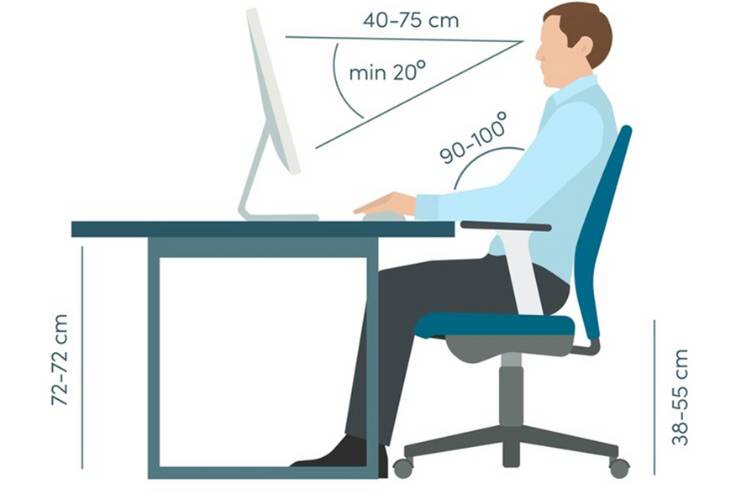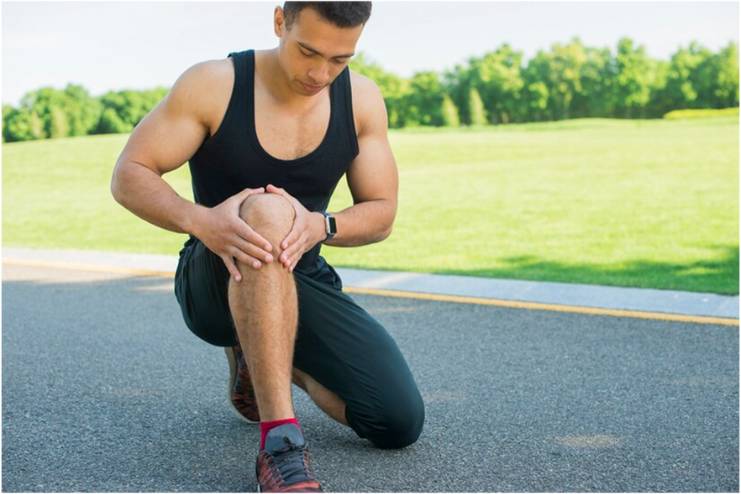Affiliate Disclaimer
Some links in this article are affiliate links. We may earn a small commission if you make a purchase through these links, at no extra cost to you. We only recommend products we find useful to our readersOsteoarthritis is a common condition that causes joint pain and stiffness. While it can’t be cured, you can protect your joints and slow the progression of osteoarthritis in plenty of ways. Preventing osteoarthritis progression is essential to maintaining mobility and reducing discomfort. Today, we’ll share 7 simple tips you can easily follow to protect your joints and manage your osteoarthritis.
7 Tips To Prevent Osteoarthritis Progression
You can reduce joint stress and prevent osteoarthritis progression by adopting healthy habits and following expert recommendations. Taking these 7 steps to care for your joints will make a big difference in managing osteoarthritis.

1. Maintain a Healthy Weight

Weight management for osteoarthritis is crucial to reduce strain on your joints. According to the Arthritis Foundation, each extra pound of weight adds four pounds of stress on your knees and six pounds on your hips. Reducing your Body Mass Index (BMI) eases this burden and helps lower inflammation, which otherwise can damage your cartilage. Losing even a few pounds can significantly decrease the strain on your joints and slow the progression of osteoarthritis. For instance, losing just 10 pounds can reduce knee osteoarthritis progression by up to 50%.
2. Stay Active With Low-Impact Exercise

One of the most important ways to manage osteoarthritis is to stay physically active. Low-impact exercises for osteoarthritis strengthen muscles without putting extra stress on your joints. Cycling, swimming, and walking are some perfect low-impact workouts that help reduce pressure on the joints and improve flexibility and strength. These regular exercises will also reduce pain, swelling, and stiffness while eventually slowing down the deterioration process in osteoarthritis. If you’ve never exercised before, physical therapy will help you begin a safe and effective exercise routine. In this way, you will keep yourself active while not overloading your joints. Besides, exercising will help you reduce weight, which was recommended in the above tip.
3. Practice Good Posture and Body Mechanics

Take better care of your joints by maintaining a good posture and using appropriate body mechanics to prevent further deterioration caused by osteoarthritis. Slouching, always leaning to one side, or staying in incorrect positions for too long can strain your joints.
- For desk work, have your chair supporting your lower back, keeping feet flat on the floor and knees at a 90-degree angle.
- Place your computer monitor at eye level and use only ergonomic furniture.
- Also, sleep in a neutral position to further decrease the strain and support your neck and back.
4. Protect Joints During Daily Activities

Use joint protection techniques in your daily routines to minimize wear and tear and reduce the risk of further progression of osteoarthritis.
- Begin with simple habits, such as not wearing high-heeled shoes, switching between sitting and standing, and frequent stretching.
- When lifting any heavy objects, make sure it is close to your body and lift with both hands to evenly distribute the weight.
- In addition to all these, you also have to slide instead of lifting heavy items and use supportive devices like braces or shoe inserts in order to reduce stress on your joints and prevent further injury as osteoarthritis advances.
5. Make Certain Dietary Changes

Diet also plays an important role in joint health and can slow the progression of osteoarthritis. Anti-inflammatory foods may reduce the breakdowns in cartilage and bone loss that come with aging.
- Add to your diet some calcium-rich foods like milk, yogurt, and salmon, which are very helpful in tissue repair and in supporting bone health.
- Add omega-3 fatty acids to your diet with fish oil, walnuts, and flaxseeds to minimize inflammation of the joints.
- Vitamin D can further alleviate joint pain and you may get it from fatty fish and sunlight.
6. Use Joint-Friendly Supplements

If you are unable to maintain a proper diet, supplements may help in managing the symptoms of osteoarthritis. Many supplements are highly renowned for their potential benefits, scientific evidence remains mixed. Always consult with a doctor before starting any supplement. Here are some of the supplements for osteoarthritis:
- Curcumin
- Boswellia Serrata
- Vitamin D
- Omega-3 Fatty Acids
- Glucosamine
- S-Adenosyl-L-methionine (SAMe)
- Collagen
7. Avoid High-Impact Movements

High-impact activities and joint injuries can increase your risk of developing osteoarthritis. Joint injuries sustained either in the younger or adult years can make you more vulnerable to osteoarthritis. In fact, if you’ve injured a knee in youth, there is three times the risk of developing osteoarthritis in that knee. If you’ve injured your knee as an adult, there is five times the risk of developing osteoarthritis in that knee.
Following are some of the recommendations from the National Institute of Arthritis and Musculoskeletal and Skin Diseases to reduce the risk for joint injuries and osteoarthritis:
- Avoid bending knees more than 90 degrees in exercises.
- Keep your feet as flat as possible.
- Land correctly when jumping. Be sure to roll into a jump.
- Warm up with exercises before physical activities and sporting events, and cool down afterward, even if it is a sport that seems low-impact, such as golf.
- Wear shoes that offer adequate shock absorption and stability to minimize your risk of injury.
- Exercise on softer surfaces rather than hard ones like asphalt or concrete.
Also, read: 5 Herbs To Fight Osteoarthritis Pain
Seek Medical Guidance for Pain Management

Self-care and lifestyle adjustments go a long way. However, for proper pain management and treatment, it’s important to seek medical advice. Here is why and how you should seek medical guidance:
- Consult a doctor to assess the severity of your osteoarthritis, discuss your symptoms, and develop a personalized treatment plan.
- They may recommend various medications, including over-the-counter pain relievers (such as acetaminophen or NSAIDs) and prescription medications.
- A physical therapist can design a tailored exercise program to strengthen muscles around affected joints, improve flexibility, and reduce pain. They may also offer techniques for joint protection and pain relief.
- For a severe case, you may need advanced treatments. These can include corticosteroid injections, hyaluronic acid injections, or even surgical options like arthroscopy or joint replacement. Your doctor can explain the benefits and risks of these treatments based on your specific condition.
- Follow up with your doctor from time to time to monitor the progress of your treatment and make adjustments as needed. They can help address any new symptoms or concerns and ensure that your pain management strategy remains effective.
- If you have other health conditions that might affect your osteoarthritis or pain management, your doctor can help integrate treatment for these issues into your overall care plan.
- Your doctor can take care of other coexisting medical conditions that may be affecting your osteoarthritis or pain management.
Conclusion
Preventing osteoarthritis progression involves lifestyle adjustments, dietary changes, and medical guidance. Practice good posture and avoid high-impact activities to reduce stress on your joints and help slow the progression of osteoarthritis. Include anti-inflammatory food and nutrients necessary for joint health. Though supplements can be quite helpful, it is best to consult with a doctor to ensure they are safe and will work effectively. Exercise regularly, make pain-reducing modifications, and seek medical guidance to best manage pain.
References
- https://www.medicalnewstoday.com/articles/how-to-prevent-osteoarthritis
- https://www.medicalnewstoday.com/articles/supplements-for-osteoarthritis
- https://www.webmd.com/osteoarthritis/osteoarthritis-prevention-1
- https://www.webmd.com/arthritis/arthritis-guide
- https://www.healthline.com/health/osteoarthritis-prevention
- https://www.hackensackmeridianhealth.org/en/healthu/2023/11/13/nine-ways-to-slow-osteoarthritis-progression
- https://healthmatch.io/osteoarthritis/can-you-reverse-osteoarthritis
In this Article





















